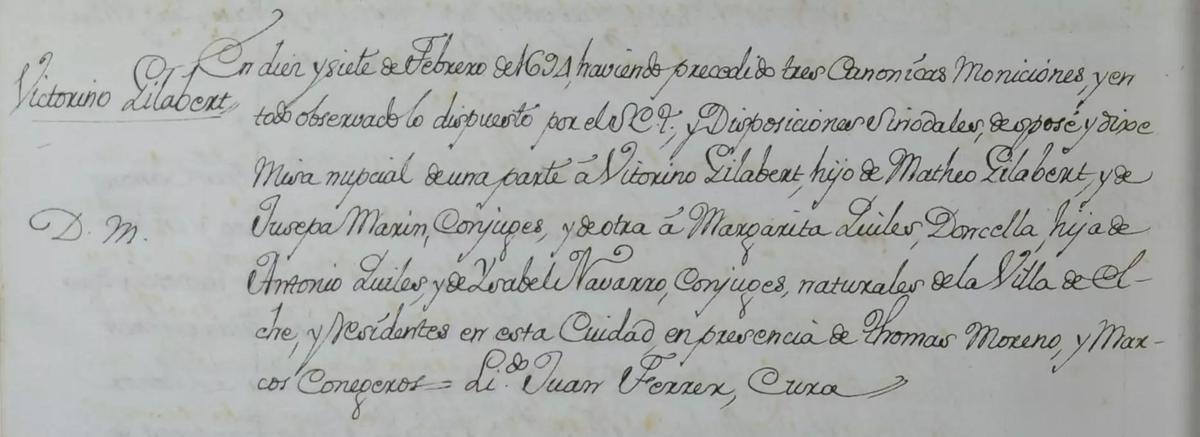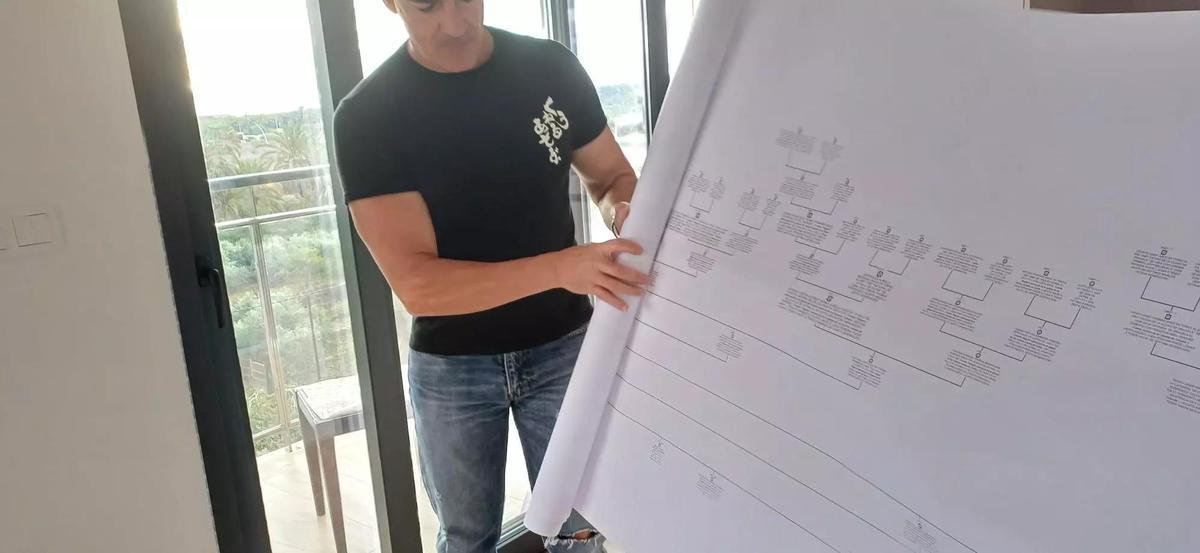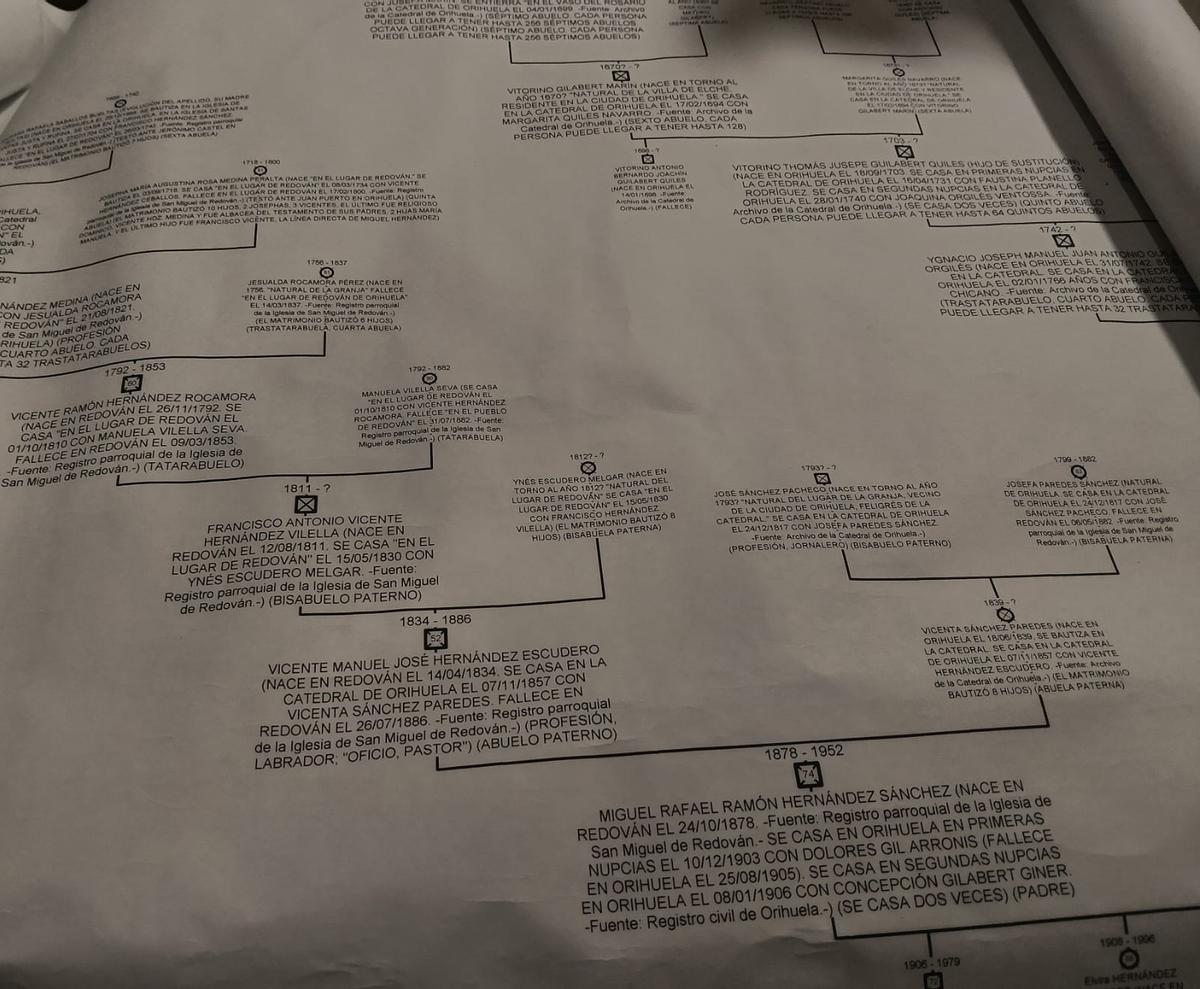
It has been 115 years since Miguel Hernández was born in Orihuelaon October 30, 1910. His early death, at 31, has not prevented the immortality of those who sprout and have life again.
The Hernandian researcher Joan Pàmies and Fran Belmonte, a historian specializing in genealogy and family history, have worked for two years to climb the family tree of the universal poet, going back to the year 1600 to learn about their ancestors and sociocultural backgroundand also those of his wife and muse, Josefina Manresa. “A tree that has no waste”advances Pàmies, who has been linking the data that Belmonte was tracking in civil and parish records to the biography.
An extensive investigation into the origins of the writer which, as usually happens when diving into the past, leaves behind many curiosities and surprises -or perhaps whims of fate-. Going back several centuries, the study refers to a wedding celebrated in August 1674 in the Orihuela Cathedral between Dionisio Hernández Plaza and Ángela Sánchez Rodríguez, a marriage from which 11 children would be born. One of them, with the surname Hernández Sánchez, is the one who continues the paternal line down to the poet.

Inscription of the sixth grandparents of Miguel Hernández in the Orihuela Cathedral / Information
The Hernandezes
From there a thread has been pulled that suggests that The Hernández family, contrary to the prevailing image, has a certain economic level for a timealthough it later suffered some crises due to historical vicissitudes such as the outbreak of the cholera, morbidity and yellow fever epidemics or the arrival of the French from 1810 onwards.
The geographical dispersion of the origins of the surnames that are related to the Hernández is interesting, but Courtships and marriages take place mainly between residents of Orihuela or Redován. The Hernándezes have few crossings, and They lived in Orihuela from 1600 to 1734. There is a Hernández who is a Dominican from the Santo Domingo school who opens the doors to interact with people from Redován to manage the friars' lands and to carry out businesses linked to animals. Miguel's grandfather was in 1844 the first constitutional mayor of Redován. They returned to Orihuela in 1903.
It is not a sedentary family and breaks with the endogamy of the area. They are people who are linked to the migratory movement of the entire province and Murciadue to the lack of labor and pandemics, which is also a reflection of how Orihuela has been formed.
Thus, both researchers maintain that They are “middle class”: “They are not poor in solemnity, but rather Miguel receives an inheritance that leaves a cultural legacy in the poet that has facilitated his literary production.“.

Belmonte shows the document with the family tree / D. Pamies
Their ancestors are day laborers, merchants, artisans, dealers, merchants, dealers, brokers… Some work for the nobility. In successive generations the head of the family will be a farmer, a pattern that is followed in the Vega Baja.
In general, the documentation shows the social ancestry of a paternal family located in the spheres of power in Orihuela in the 17th and 18th centurieswhen the city has a small nobility and a very powerful clergy and with an economic movement linked to these classes.
They always appear the so-called children of substitutions -giving the name of one dead child to another- and family crossings, avoiding genetic problems, but ensuring that the lands are not broken, something that indicates a good economic level.
Proof of this is also that the Hernándezes made wills and had executors. -when you have to distribute-. Some, in addition, were buried in the same Oriolana cathedral and in the Colegio de Santo Domingo.with funerals of five clerics and the payment of dozens of funeral masses in favor of the soul. Another detail is that the Marquis of Rafal is godfather at the baptism of some Hernández.

Family tree detail / Information
Miguel's own father ran a small business selling animals and milk for which it was necessary to have capital.and they lived in one of the best houses on Arriba Street.
The result is that Miguel Hernández inherits a broad vocabulary from ancestors with a certain social, cultural and economic position. “In the family there is a linguistic mastery superior to that of their neighbors, who only manage the terms of the garden, those of their daily work, what is necessary to live,” emphasize the researchers, who insist that “he is not an orphan, but rather receives a linguistic legacy that is a breeding ground for terms that has influenced, among other factors, being a good writer“, compared to what is usually believed that it was an almost illiterate and poor family.

Josefina Manresa and Miguel Hernández in Jaén / Information
A familiar language that was initially Catalan and later Spanish. The records speak of the displacement of Catalan by Spanish due to the Bourbon prohibition and the arrival of workers to Orihuela, due to the great mortality due to the epidemics.
Thus, changes in surnames are observed. For example, Gilabert goes to Guilabert and vice versa, and Llorente to Lorente. Miguel is related to Mayor Mónica Lorente and two other councilors: José Manuel Medina and Vicente Escudero.
If the Hernándezes are rooted in Orihuela, The Gilabert branch comes from Elchewith businesses with horses and livestock. Here too there is a bizarre twist of fate. Miguel is a relative of the last Franco mayor in Elche, Vicente Quiles.repressor in 1976 of the concentration that took place in the city in honor of the poet and that supported arrests, among them, that of a nephew of the writer.
Josefina
The family of the architect of the poet's legacy that has reached our daysto which he dedicates The lightning that does not stopwas well situated economically until the crisis caused by the French invasion, the plague and a snowfall that affected crops.
On the maternal side, the Marhuendas come from Cox. Josefina is related to the mayor of Cox Carmelo Ribes and the current councilor, Antonio Bernabeu Santo.
Researchers have reached the Manresa branch until 1562. The first baptismal inscription in La Murada is one of his ancestors.. Specifically, his fourth grandmother, Josefa Barnarda Campuzano García, who was born and died in the Oriolana district (1788-1828).
It comes from Callosa de Segura, where it crosses paths with the Almarcha. And this is where another twist occurs. Josefina shares a great-great-grandfather (Esteban Almarcha Cerdán) with Luis Almarchawho is his third cousin, the Francoist bishop who blackmailed the poet during the prison period so that he would repent of his work and write a letter of support for Franco in exchange for transferring him to a hospital. “We consider him responsible for letting him die in prison”emphasizes Pàmies, who remembers that he also pressured Josefina to hand over documents and poems, probably to destroy them.
He is convinced that she did not know that they were related, but he believes it is possible that the clergyman knew.“because the priests know everything,” concludes Pàmies after a study that fertilizes the tree felled until now.
Subscribe to continue reading